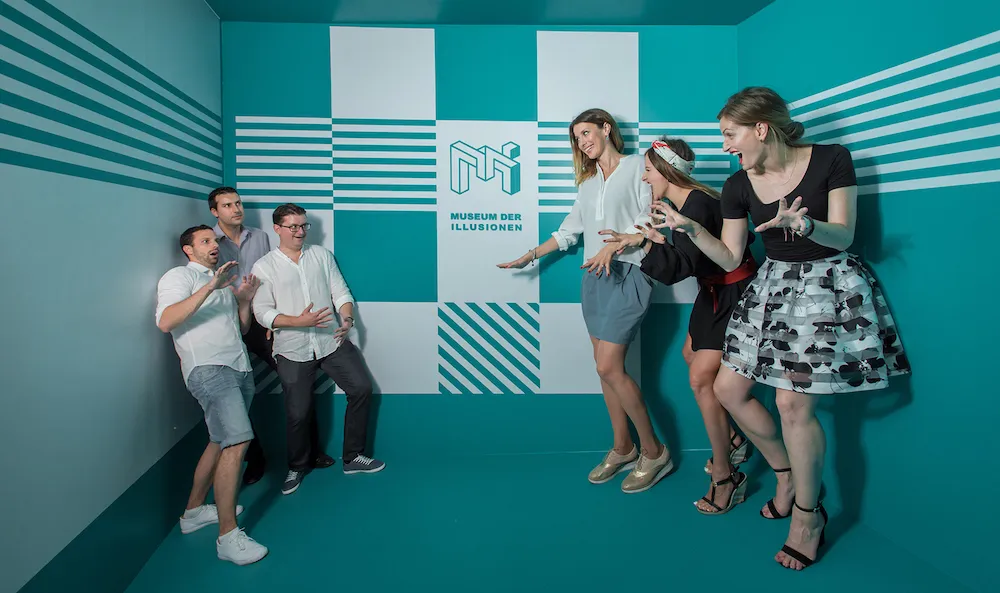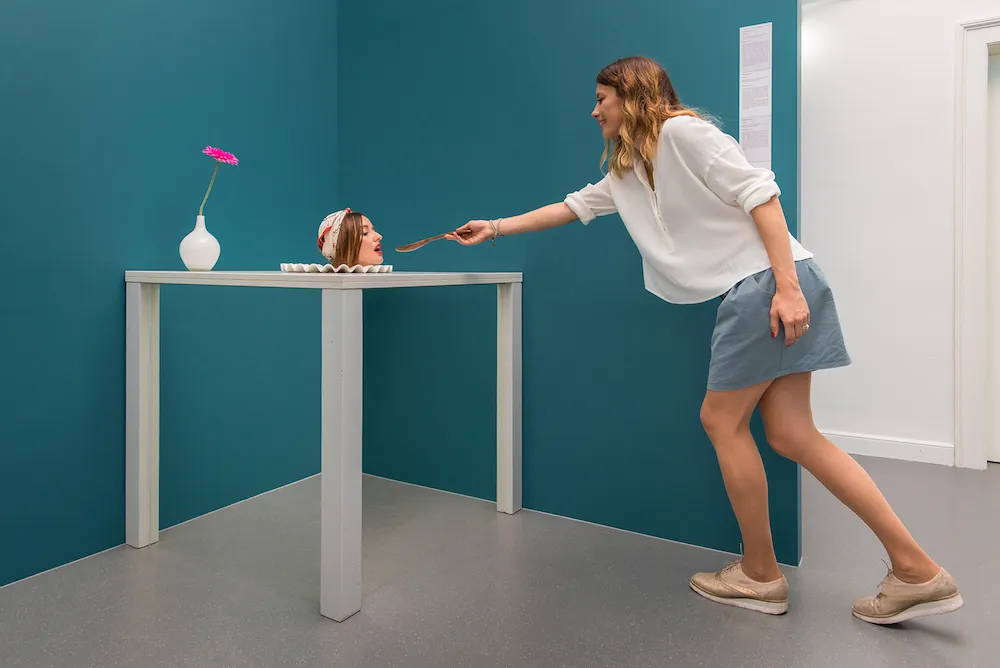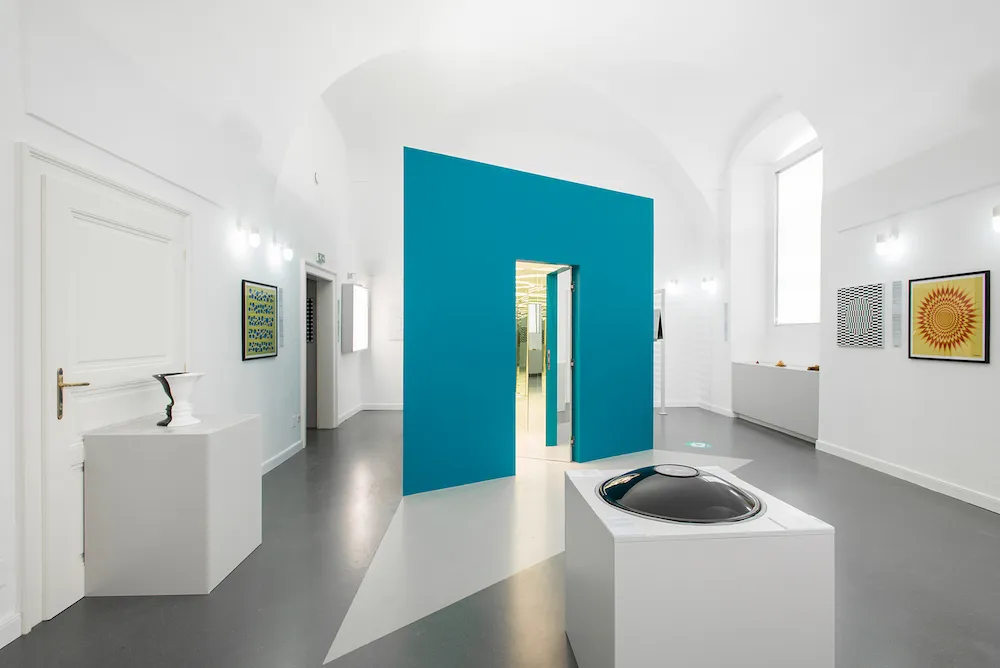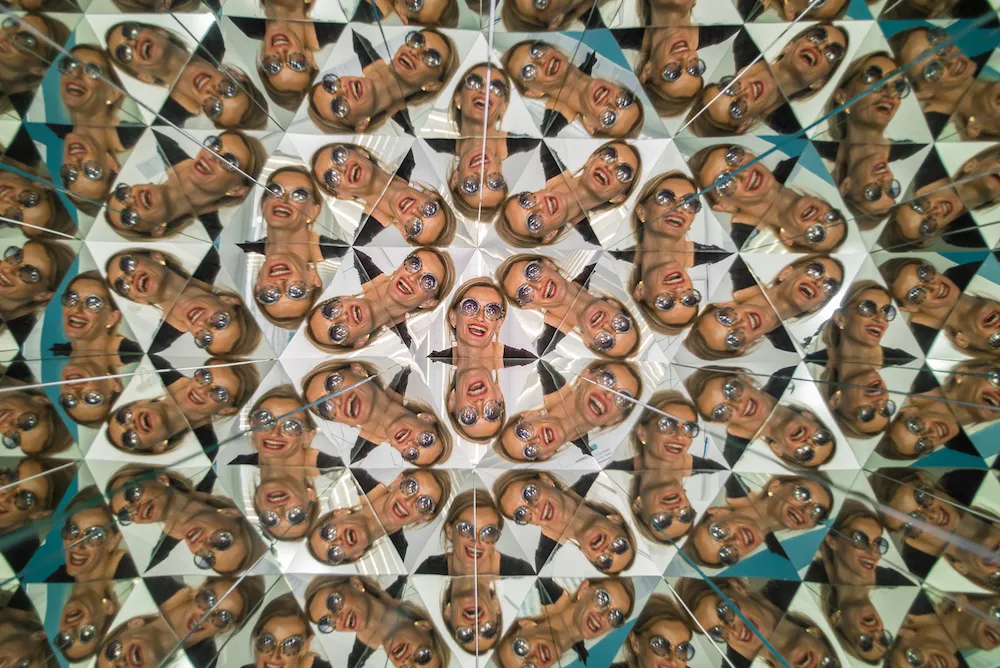Inside the Mind-Bending World of the Museum of Illusions
Perception or reality? This museum in Vienna, Austria, may cause you to do a double take
Ever think you’re seeing one thing, but suddenly realize that your eyes are playing tricks on you? Most of us are familiar with this disorienting feeling, and in many such cases, it’s thanks to an optical illusion. The world is rife with them, occurring when your eyes visually deceive you into seeing something that's really just a skewed depiction of reality. And while these moments can sometimes be downright nerve wracking (after all, who hasn’t questioned whether they need to go have their eyes checked by an optometrist after such an event?), optical illusions are also a fun way to force your eyes—and brain—out of their comfort zone.
This is where the Museum of Illusions comes in. Opened this summer in Vienna, Austria, the museum contains 70 illusions designed to make you second guess your perception of reality.
Lana Rozic, an architect and owner of the museum, opened the location after visiting a similar venue in Croatia. (The Austrian location is part of a collection of museums, with additional locations in Slovenia and Oman.)
“I remember watching people laughing and having a good time, which is something I [had] never experienced before while inside a museum,” Rozic tells Smithsonian.com. “People were showing that they were having fun. At the Museum of Illusions, you’re allowed to laugh and be loud. We wanted to combine education with fun.”
Numerous scientists over the years have tried studying what actually happens between the brain and eyes when looking at an optical illusion. (The 1981 Nobel Prize went to a researcher studying this very topic.) A number of theories have surfaced, including one that argues the illusion is caused as the brain tries to predict what will happen during the tiny delay between when an event actually happens and when our brain is able to perceive it. Other theories that have been put forth to explain the perception of motion, include the idea that tiny rapid eye movements cause so many slightly different images to be passed to the visual cortex at once that the brain gets confused.
One exhibit in particular that plays on this motion illusion is the Vortex Tunnel, which puts museumgoers on a fully stable bridge that’s encapsulated by a spinning cylinder.
“Once you’re inside, your brain thinks that the bridge is spinning, but it’s really just the cylinder,” Rozic says. “It’s like being inside a laundry machine. It’s interesting what it does to your brain, since your brain can’t believe what your eyes are seeing. It’s like they’re having a fight.”

Another grand illusion is the Ames Room, which calls to mind the scene in the movie “Willy Wonka and the Chocolate Factory” where Wonka walks down a hallway only to appear bigger than the walls and doors surrounding him. In the case of the Ames Room, depending on where you stand, you’ll appear larger or smaller than your companions.
“This illusion is an example of the giant and the dwarf,” Rozic says. “It feels like a normal room at first, but when you take a photo the angle of the walls makes people look bigger or smaller in relation to one another.”
While Rozic says that the museum plans to keep its current collection of exhibitions on view, it anticipates adding to the collection as well by developing new illusions—including conducting a competition with a local university to invite local students to create new illusions.
“It doesn’t matter your age; when people visit the museum, their faces all show the same questions marks wondering how these illusions are even possible,” she says. “Here, you don’t just admire a work—you try to solve it.”
Planning Your Next Trip?
Explore great travel deals
Smithsonian magazine participates in affiliate link advertising programs. If you purchase an item through these links, we receive a commission.

/https://tf-cmsv2-smithsonianmag-media.s3.amazonaws.com/filer/c0/b9/c0b92675-de6e-4333-a2c0-c9ada92279e7/beuchet_chair_museum_der_illusionen.jpg)


